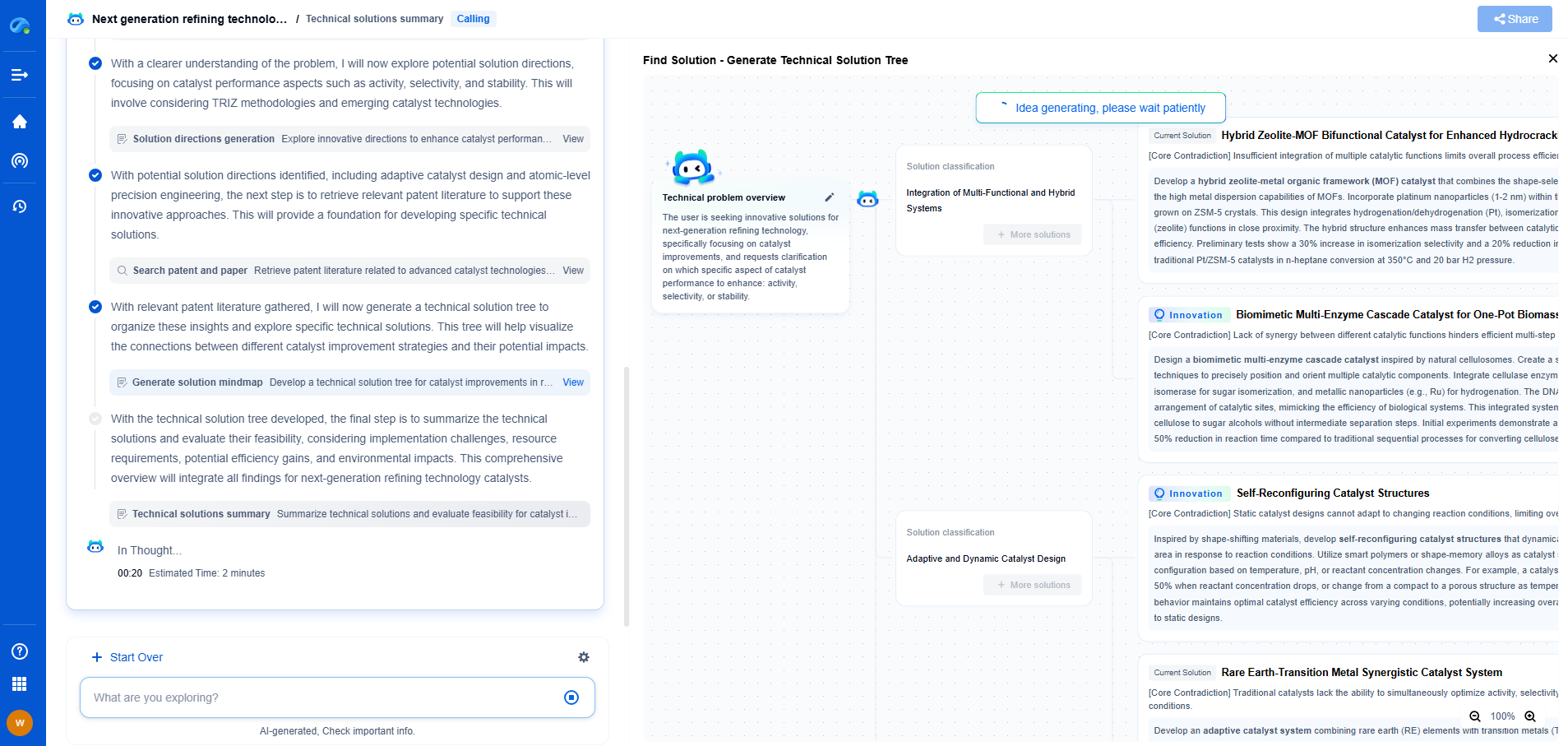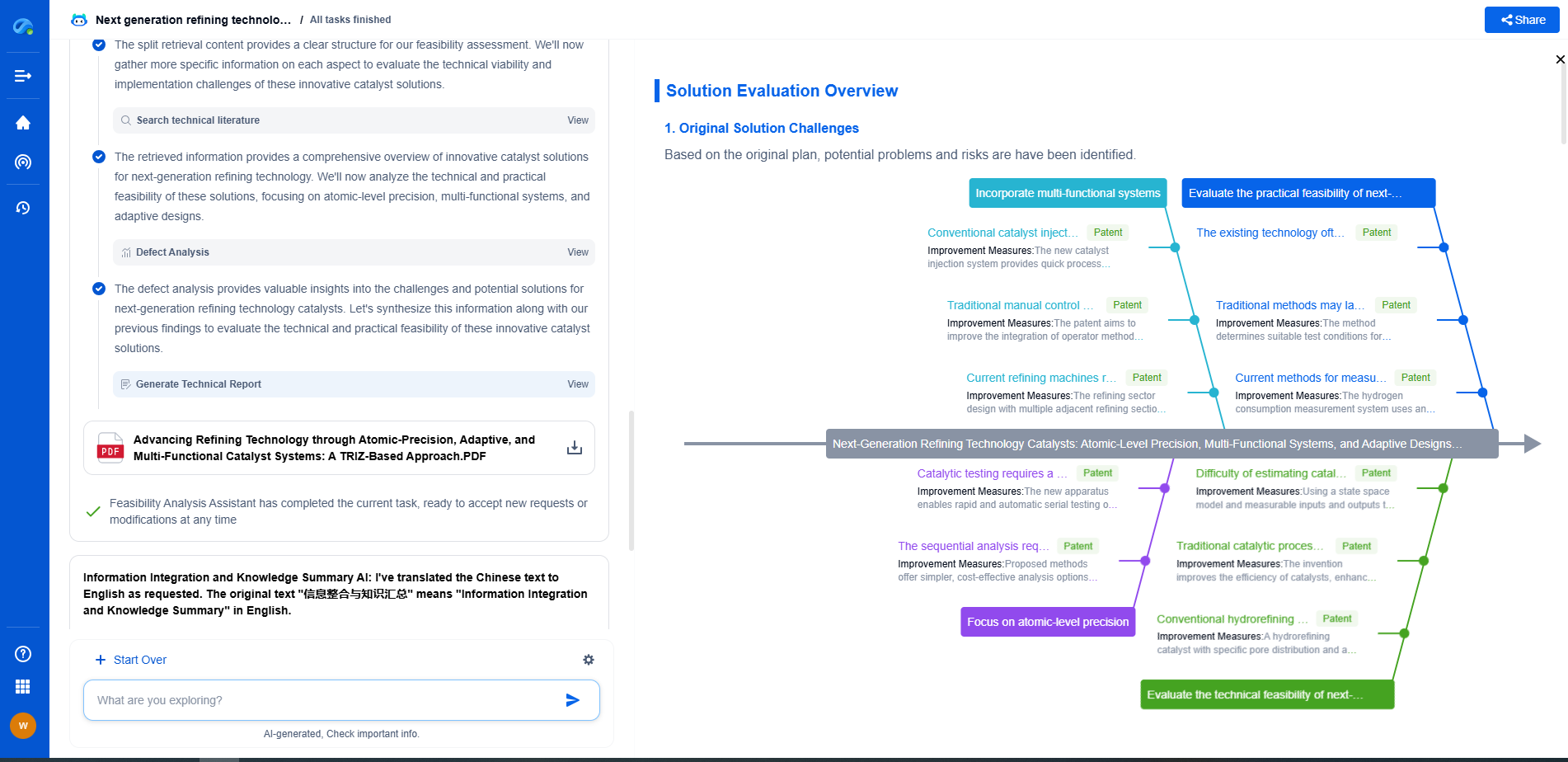What Is a Leak Detection System and How Does It Work?
JUN 20, 2025 |
Leak detection systems are an essential component in various industries, including plumbing, oil and gas, and environmental monitoring. Their primary function is to identify and alert users to the presence of leaks, which can cause significant damage, financial loss, and environmental harm if left unaddressed. Understanding how these systems work is crucial for both businesses and homeowners seeking to protect their assets and the environment.
Types of Leak Detection Systems
1. Acoustic Leak Detection
Acoustic leak detection systems use sound technology to identify leaks. These systems employ sensitive microphones and sensors to pick up the sound of escaping fluids or gases. By analyzing these sound patterns, they can pinpoint the location of a leak. This method is particularly effective for detecting leaks in large pipelines and water distribution systems, where other methods may be less practical.
2. Pressure-Based Leak Detection
Pressure-based systems monitor changes in pressure within a pipeline or container. A sudden drop in pressure typically indicates a leak. These systems are often used in pressurized systems like gas pipelines and industrial processes. They work by constantly measuring pressure levels and comparing them to expected values, triggering an alert if discrepancies are detected.
3. Chemical Leak Detection
Chemical detection systems involve the use of tracer gases or dyes that are introduced into a system. If a leak occurs, these substances escape and can be detected using specialized equipment. This method is highly effective for detecting small leaks and is widely used in the automotive and aerospace industries.
4. Infrared and Thermal Imaging
Infrared and thermal imaging systems detect changes in temperature caused by leaks. These systems use cameras that can visualize heat patterns, allowing for the identification of leaks based on temperature anomalies. This approach is often used for detecting leaks in refrigeration systems, building envelopes, and areas difficult to access.
5. Electronic Leak Detection
Electronic leak detection involves the use of sensors that can detect moisture or changes in electrical conductivity. These sensors are often placed in strategic locations to monitor for leaks in areas like bathrooms, kitchens, and basements. When moisture is detected, the system triggers an alarm, alerting the user to the presence of a leak.
How Leak Detection Systems Work
While the specific workings of leak detection systems vary depending on the type, the general process involves monitoring, detection, and alerting.
Monitoring
The first step in leak detection is continuous monitoring of the environment or system. Sensors are strategically placed to optimize coverage and effectiveness. These sensors constantly collect data on variables like sound, pressure, temperature, or moisture levels.
Detection
Once monitoring is in place, the system analyzes the collected data to identify any anomalies that may indicate a leak. Advanced systems use algorithms and machine learning to enhance detection accuracy and reduce false positives.
Alerting
When a potential leak is detected, the system immediately alerts the user. Alerts can take various forms, including audible alarms, text messages, or notifications through an app. This prompt notification allows for quick response, minimizing potential damage.
Benefits of Leak Detection Systems
Leak detection systems offer numerous benefits, including:
1. Damage Mitigation
By identifying leaks early, these systems help prevent significant damage to property and infrastructure, saving on repair costs and downtime.
2. Environmental Protection
Leak detection plays a critical role in preventing harmful substances from entering the environment, protecting ecosystems and public health.
3. Cost Savings
Prompt leak detection and repair reduce water and energy consumption, leading to cost savings on utility bills and resource management.
4. Regulatory Compliance
In many industries, leak detection is a regulatory requirement. Implementing these systems ensures compliance with industry standards and legal obligations.
Conclusion
Leak detection systems are an invaluable tool for safeguarding assets and the environment. By understanding the types and workings of these systems, individuals and businesses can make informed decisions about the best solutions for their needs. Whether through acoustic, pressure-based, chemical, or electronic methods, leak detection systems provide peace of mind and practical benefits in preventing leak-related issues.
Transform the Way You Innovate in Pipeline Technology—with AI-Powered Intelligence
From corrosion-resistant materials to smart monitoring systems and advanced flow control mechanisms, the pipeline industry is undergoing rapid technological transformation. Yet keeping up with evolving engineering solutions, regulatory landscapes, and competitive patents can be a major bottleneck for R&D and IP teams.
Patsnap Eureka is your AI-powered research companion—built specifically for professionals in high-tech and infrastructure domains like pipeline technology. Whether you're designing high-pressure transport systems, assessing trenchless installation innovations, or safeguarding proprietary flow assurance solutions, Eureka provides real-time insights into global patent trends, emerging technologies, and R&D intelligence—all in one intuitive interface.
Empower your team to innovate faster, reduce technical blind spots, and stay ahead of industry shifts. Discover Patsnap Eureka today and bring clarity and confidence to your pipeline technology decisions.
- R&D
- Intellectual Property
- Life Sciences
- Materials
- Tech Scout
- Unparalleled Data Quality
- Higher Quality Content
- 60% Fewer Hallucinations
Browse by: Latest US Patents, China's latest patents, Technical Efficacy Thesaurus, Application Domain, Technology Topic, Popular Technical Reports.
© 2025 PatSnap. All rights reserved.Legal|Privacy policy|Modern Slavery Act Transparency Statement|Sitemap|About US| Contact US: help@patsnap.com

